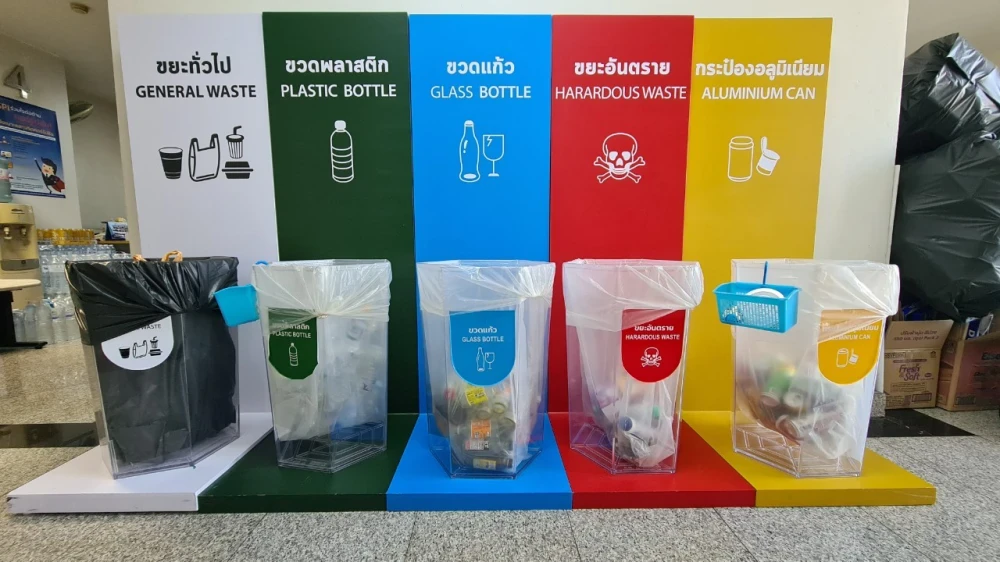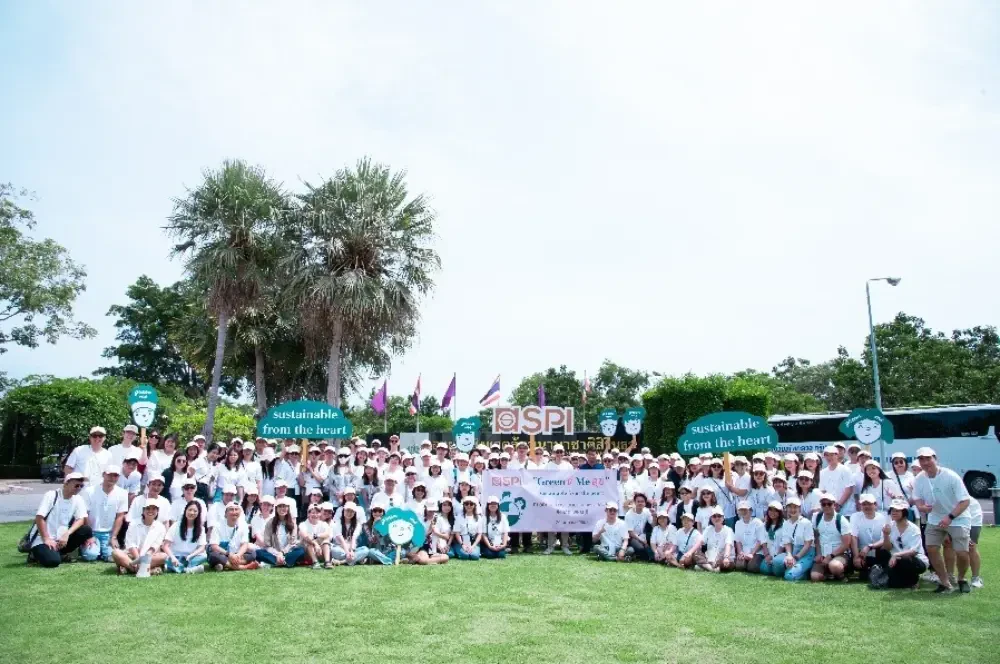Importance and Mission
Under the United Nations Framework Convention on Climate Change (UNFCCC), which is linked to the Paris Agreement, the goal is to limit the global average temperature increase to no more than 1.5°C This presents significant challenges for business operations, requiring companies to navigate various risk factors, including both physical risks, such as severe natural disasters, and regulatory changes related to climate change. As a result, the Company must prepare for potential changes, as well as increasing customer expectations and evolving demands from both current and future markets. Therefore, to meet these demands and enhance competitiveness, the Company must be capable of managing and responding to customer needs while adapting to changing regulations.
Governance Structure for Climate Change Management
The Company has established a governance structure and working committees responsible for climate change management, including greenhouse gas management. The Company has established the Good Governance and Risk Management Team, responsible for ensuring appropriate and effective risk management, including climate change-related risks. Additionally, the Sustainability Committee is formed with the responsibility of developing sustainability management strategies and overseeing the implementation of action plans. In this regard, the Sustainability Working Group is also formed to act as a task force for various sustainability-related management activities, including energy management, waste management, and other supporting initiatives, ensuring minimal climate change impacts and greenhouse gas emissions. Further details on the roles and responsibilities of subcommittees are available in the Annual Registration/Statement the Annual Report 2024 (56-1 One Report), under the section on “Subcommittee Information.”
Sustainability Governance StructureGoals and Performance
Annual Target for the Year 2024
- Reporting and disclosing 100% of the volume of greenhouse gas emissions in all areas under the management of the Company to establish a baseline emission year.
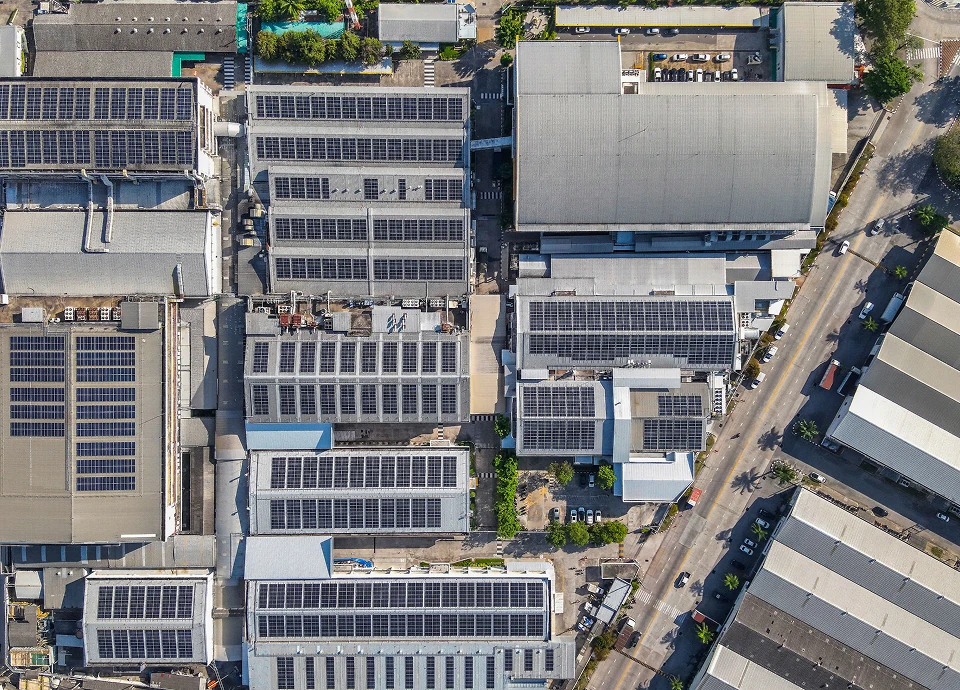
Impact and Performance Highlights
In 2024, the Company expanded its greenhouse gas emissions data collection across eight locations, covering office spaces, industrial park areas, golf courses, and other rental properties for the first time. This data will serve as the baseline year for setting greenhouse gas emission reduction targets.
Supporting the SDGs
Good Health and Well-being
Affordable and Clean Energy
Industry, Innovation, and Infrastructure
Partnerships for the Goals
Management Approach
The Company prioritizes climate change management by aligning its operations with future business directions, aiming toward clean energy and a low-carbon society. Emphasis is placed on researching and increasing investment in environmentally friendly businesses, as well as adjusting operational processes with a focus on collaboration across all sectors to reduce greenhouse gas emissions under the “Measure, Reduce, Offset” strategy, in order to achieve carbon neutrality and ultimately Net Zero Greenhouse Gas Emissions in the future.
Organizational Greenhouse Gas Management Strategy
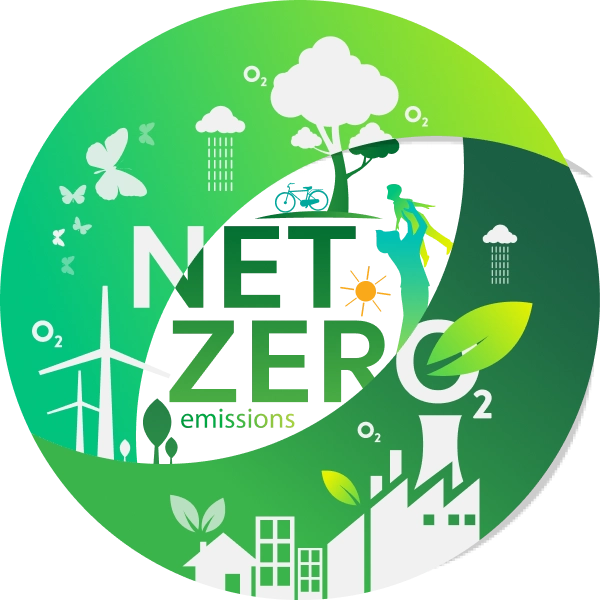
Organizational Greenhouse Gas Emission
| Operational Areas | Greenhouse Gas Emission (Unit : Ton Co2e) | |||
|---|---|---|---|---|
| Scope 1 | Scope 2 | Scope 3 | Other | |
| Bangkok Head Office | 112.46 | 104.89 | 75.38 | 157.78 |
| Saha Group Industrial Park Sriracha, Chon Buri | 178.33 | 1,327.00 | 191,420.10 | 15.24 |
| Saha Group Industrial Park Kabinburi, Prachin Buri | 270.21 | 1,900.83 | 554.33 | 48.09 |
| Kabinburi Sport Club Golf Course, Prachinburi | - | - | - | - |
| Saha Group Industrial Park Lamphun, Lamphun | 128.16 | 924.68 | 369.69 | 6.62 |
| Hariphunchai Sport Club Golf Course, Lamphun | - | - | - | - |
| Saha Group Industrial Park Mae Sot, Tak | 18.02 | 58.18 | 20.48 | 1.06 |
| J-Park Sriracha Nihon Mura Chonburi | 1.61 | 645.39 | 4,346.28 | 5.38 |
| Greenhouse Gas Emissions | 708.79 | 4,960.97 | 196,786.27 | 234.17 |
| Total Organizational Greenhouse Gas Emissions (Scope 1 + 2 + 3) |
202,690.20 | |||
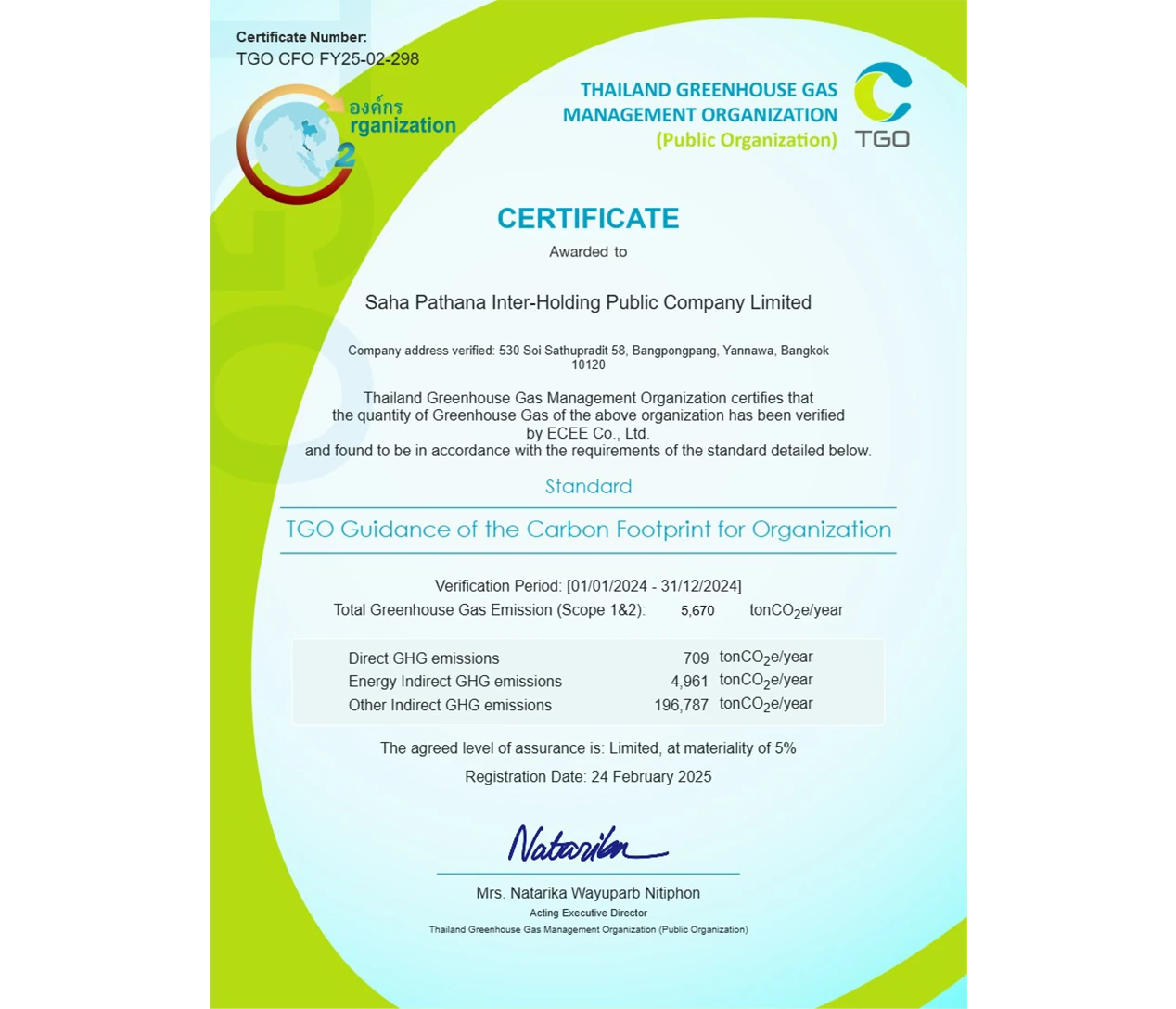
Stakeholders Directly Impacted
Employee/ Executive
Participated in reducing the organization's carbon emissions.
Customers
Supported environmentally friendly products and services.
Community and Society
Benefited from environmental and pollution reduction programs.
Government Sectors
Oversaw and supported environmental operations.
Supplier
Engaged in the use of eco-friendly materials and energy.



